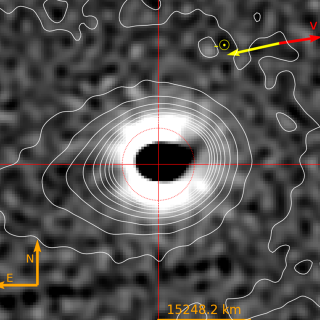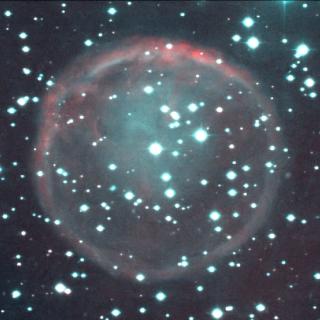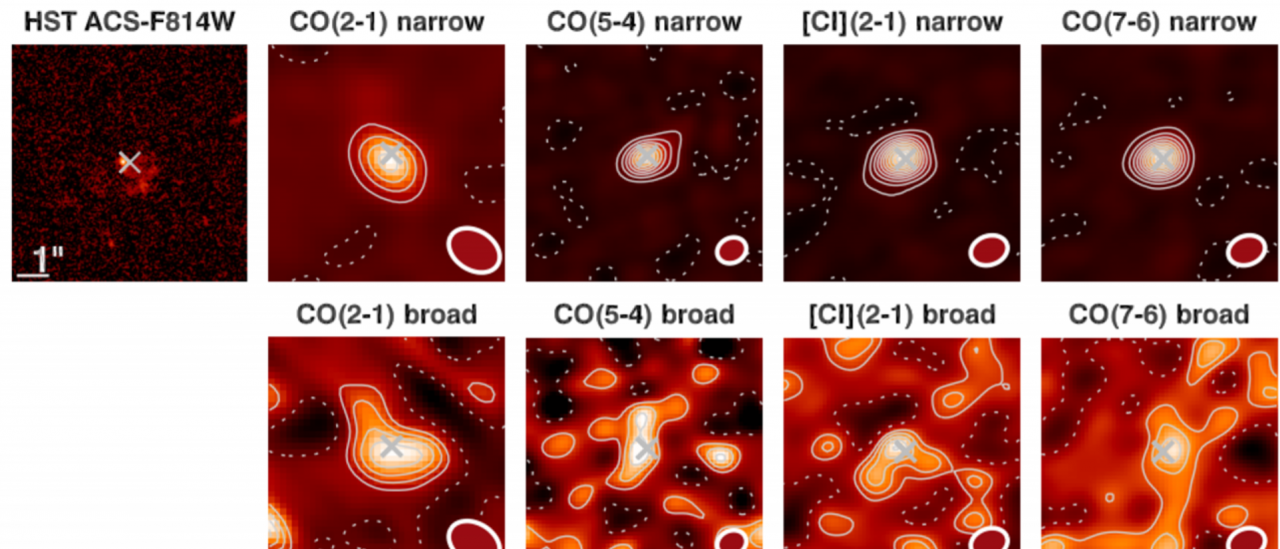Feedback-driven winds from star formation or active galactic nuclei might be a relevant channel for the abrupt quenching of star formation in massive galaxies. However, both observations and simulations support the idea that these processes are non-conflictingly co-evolving and self-regulating. Furthermore, evidence of disruptive events that are capable of fast quenching is rare, and constraints on their statistical prevalence are lacking. Here we present a massive starburst galaxy at redshift z=1.4, which is ejecting ~46% of its molecular gas mass at a startling rate of >10,000 solar masses per year. A broad component that is red-shifted from the galaxy emission is detected in four (low and high J) CO and [C I] transitions and in the ionized phase, which ensures a robust estimate of the expelled gas mass. The implied statistics suggest that similar events are potentially a major star-formation quenching channel. However, our observations provide compelling evidence that this is not a feedback-driven wind, but rather material from a merger that has been probably tidally ejected. This finding challenges some literature studies in which the role of feedback-driven winds might be overstated.
It may interest you
-
 The discovery, made in collaboration between the IAC Solar System Group and Light Bridges, reveals the rotation period of comet 3I/ATLAS The Two-metre Twin Telescope (TTT) has made a pioneering discovery in astronomy: the first detection of a jet of gas and dust and its periodic modulation in an interstellar comet, 3I/ATLAS. The study, published in the journal Astronomy & Astrophysics, provides the first evidence of localised activity from an interstellar nucleus, offering unique insight into the nature of a celestial body that formed outside our Solar System. An extraordinarily normalAdvertised on
The discovery, made in collaboration between the IAC Solar System Group and Light Bridges, reveals the rotation period of comet 3I/ATLAS The Two-metre Twin Telescope (TTT) has made a pioneering discovery in astronomy: the first detection of a jet of gas and dust and its periodic modulation in an interstellar comet, 3I/ATLAS. The study, published in the journal Astronomy & Astrophysics, provides the first evidence of localised activity from an interstellar nucleus, offering unique insight into the nature of a celestial body that formed outside our Solar System. An extraordinarily normalAdvertised on -
 Massive stars in metal-poor galaxies often have close partners, just like the massive stars in our metal-rich Milky Way. This has been discovered by an international scientific team in which research staff from the Instituto de Aastrofísica de Canarias (IAC) and the Universidad de La Laguna (ULL) participate. They used the European Very Large Telescope in Chile to monitor the velocity of massive stars in the Small Magellanic Cloud. The research is published in Nature Astronomy . For the past twenty years, astronomers have known that many massive stars in the metal-rich Milky Way have aAdvertised on
Massive stars in metal-poor galaxies often have close partners, just like the massive stars in our metal-rich Milky Way. This has been discovered by an international scientific team in which research staff from the Instituto de Aastrofísica de Canarias (IAC) and the Universidad de La Laguna (ULL) participate. They used the European Very Large Telescope in Chile to monitor the velocity of massive stars in the Small Magellanic Cloud. The research is published in Nature Astronomy . For the past twenty years, astronomers have known that many massive stars in the metal-rich Milky Way have aAdvertised on -
 An international team of researchers, including staff from the Instituto de Astrofísica de Canarias (IAC), has discovered a planetary nebula that destroyed its own planetary system, conserving the remaining fragments in the form of dust orbiting its central star. To date, more than 5000 exoplanets have been discovered orbiting stars of all kinds and almost every stage of stellar evolution. However, while exoplanets have been discovered around white dwarfs – the final stage in the evolution of low- and intermediate-mass stars like the Sun, no exoplanets have been detected in the previousAdvertised on
An international team of researchers, including staff from the Instituto de Astrofísica de Canarias (IAC), has discovered a planetary nebula that destroyed its own planetary system, conserving the remaining fragments in the form of dust orbiting its central star. To date, more than 5000 exoplanets have been discovered orbiting stars of all kinds and almost every stage of stellar evolution. However, while exoplanets have been discovered around white dwarfs – the final stage in the evolution of low- and intermediate-mass stars like the Sun, no exoplanets have been detected in the previousAdvertised on
